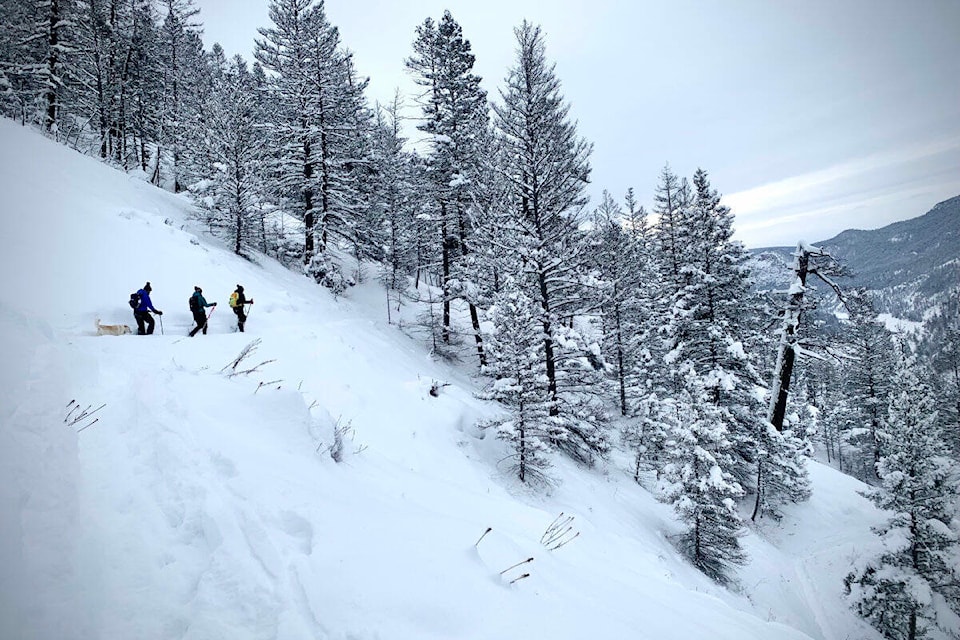Winter in B.C.’s Northern and Interior regions has been hitting hard and fast, with super cold temperatures and large amounts of snow in December and early January, following by freezing rain this week.
So what does this mean for backcountry and winter mountain sports enthusiasts?
It meant great snow conditions for playing in the snow, but it could mean needing to be even more aware of snow safety, with deeper tree wells, wind-affected snow layers and a ton of the white stuff.
Sometimes you might be in avalanche terrain without realizing it.
“Once a slope is larger than 10 metres by 10 metres it could have enough snow on it to create an avalanche that’s dangerous to a person,” according to Avalanche Canada. Slopes steeper than a 30 degree angle are where most avalanches happen, and terrain shape and aspect can all be factors.
Without realizing it, people might not associate that their activities could be in hazardous situations.
Avalanche Canada’s website shows an example of a video from a man on a trail who was dusted by an avalanche coming down a nearby slope into the valley he was in.
Aspiring mountain guide Wes Gregg, who is an AST 1 Avalanche Canada instructor, talked about what he has been seeing in the current snow pack.
“We ended up with this low-density cold snow and then some wind,” said Gregg, who lives in Williams Lake. “So the avalanche problem right now in many areas, including our area, is wind slabs.”
Rising temperatures will now begin to impact the snowpack further and change conditions again as the week goes on.
With conditions changing daily, the higher alpine terrain is expected to begin warming later this week, according to forecasts.
Gregg encourages people to prepare properly and educate themselves, with the best resource being avalanche.ca according to Gregg, where Avalanche Canada updates posts daily at 4 p.m. and then revisits them each morning at 6 a.m., to update in case of any changes which may have happened overnight.
“Be diligent,” said Gregg, who recommends using the Avalanche Canada app for smart phones and also posting to the mountain information network if you have any reports, photos or incidents to share.
“Lately we’ve been getting very sparse data,” explained Gregg, who said last season was better for local reports.
With only a handful of professional operations in the Cariboo area, Avalanche Canada relies on limited data, often they are extrapolating based on regional reports and weather reports.
“Even the smallest thing like a picture or a posting ‘the ride was good’ on the mountain information network on avalanche.ca makes a huge difference in helping the forecasters forecast more accurately for our area,” said Gregg.
“Forecasters can tell a lot from a picture.”
He encourages skiers and snowmobilers to think about taking a photo of any pit or trench wall they create while out in the mountains and even just sending those if you have limited time.
While many people share on Instagram or other social media platforms, those are limited in their reach for fellow backcountry enthusiasts, he explains.
But the biggest thing is to be prepared.
“If you don’t have training, get training and if you do have training … check conditions … because things can change,” said Gregg.
Avalanche Canada has a great online information resource called Avvy Savvy as well as listings of some of the courses and training available.
Gregg will be teaching a skiing AST 1 course near Williams Lake this coming weekend and has another snowmobile AST 1 course coming up.
For those interested in avalanche safety training in the Interior, groups of four or more can contact brad@avaware.ca to book a course.
Read more:
Read more:
ruth.lloyd@wltribune.com
Like us on and follow us on



